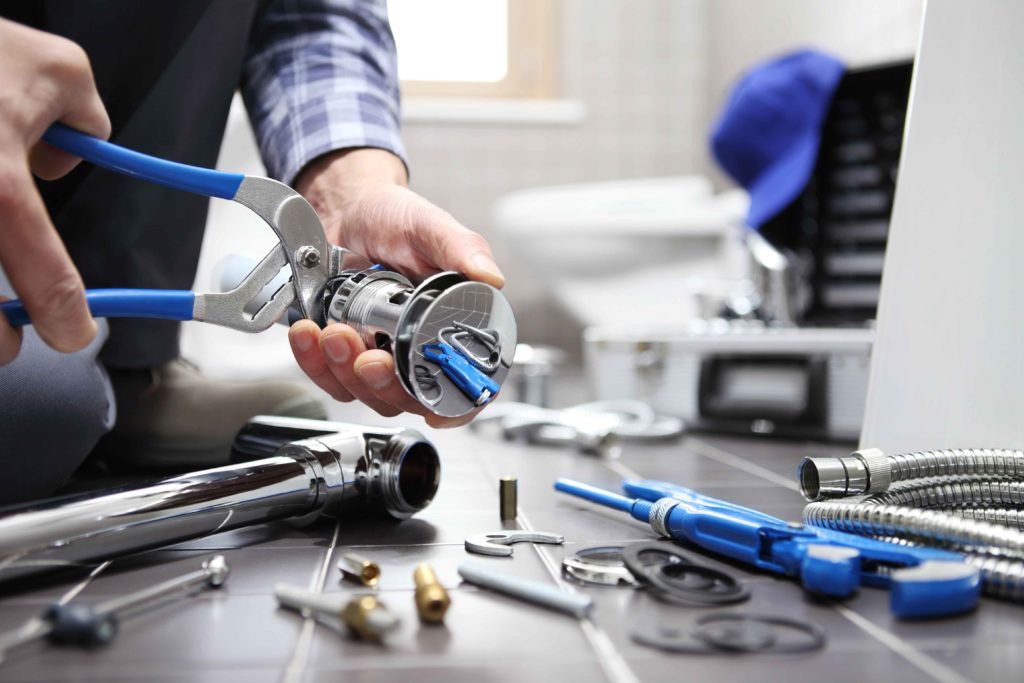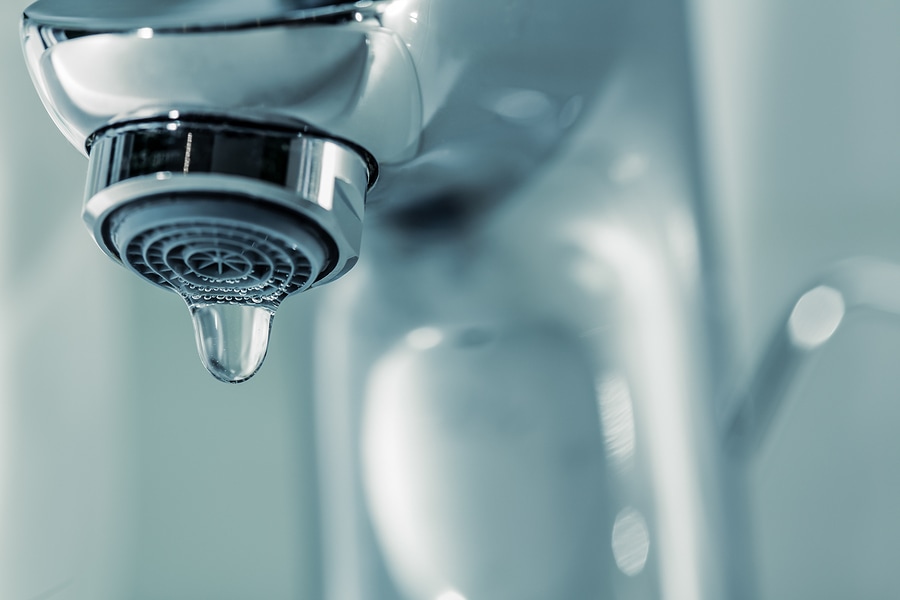Exploring the Relevance of Correcting a Leaking Faucet
Exploring the Relevance of Correcting a Leaking Faucet
Blog Article
Any individual maintains their own idea when it comes to Leaky Faucets: Why They Happen & What to Do About Them.

Trickling taps could feel like a small aggravation, yet their impact goes beyond just the annoyance of the audio. From drainage to incurring unnecessary economic prices and health and wellness risks, ignoring a trickling faucet can bring about different consequences. In this write-up, we'll explore why it's essential to resolve this typical house problem immediately and properly.
Waste of Water
Environmental Effect
Dripping taps contribute dramatically to water wastage. According to the Epa (EPA), a solitary faucet dripping at one drip per secondly can lose more than 3,000 gallons of water annually. This not only strains water resources yet likewise affects ecological communities and wild animals dependent on them.
Financial Prices
Boosted Water Bills
Past the environmental impact, leaking faucets can pump up water bills significantly. The accumulated wastefulness over time equates into higher utility expenditures, which could have been stayed clear of with prompt fixings.
Possible Residential Or Commercial Property Damage
Additionally, long term dripping can result in damage to components and surface areas bordering the tap. Water buildup can cause discoloration, rust, and even architectural issues if left neglected, leading to added repair work prices.
Health and wellness Problems
Mold and Mold Development
The continuous visibility of moisture from a leaking tap develops a suitable atmosphere for mold and mildew and mold growth. These fungi not only jeopardize interior air top quality yet also position health and wellness dangers, specifically for individuals with breathing conditions or allergies.
Waterborne Illness
Stagnant water in dripping faucets can become a breeding ground for bacteria and various other virus, raising the risk of waterborne conditions. Impurities such as Legionella microorganisms prosper in stagnant water, potentially bring about significant ailments when ingested or breathed in.
Do it yourself vs. Professional Fixing
Advantages and disadvantages of DIY Repair Service
While some might attempt to repair a trickling tap themselves, DIY repair work include their very own collection of challenges. Without proper understanding and devices, do it yourself efforts can exacerbate the issue or result in incomplete repair services, lengthening the trouble.
Advantages of Working With a Specialist Plumber
Working with a specialist plumber makes sure that the underlying source of the leaking tap is resolved effectively. Plumbings possess the proficiency and tools to detect and repair faucet issues efficiently, saving time and lessening the danger of more damages.
Step-by-Step Guide to Repairing a Dripping Faucet
Devices Called for
Before attempting to fix a leaking faucet, collect the required tools, consisting of an adjustable wrench, screwdrivers, substitute parts (such as washing machines or cartridges), and plumber's tape.
Typical Faucet Issues and Their Solutions
Recognize the type of tap and the specific issue creating the drip. Common issues consist of worn-out washing machines, corroded valve seats, or damaged O-rings. Refer to maker instructions or on-line tutorials for step-by-step assistance on fixings.
Safety nets
Regular Maintenance Tips
To avoid trickling taps, perform regular maintenance such as cleaning aerators, evaluating for leakages, and changing damaged components without delay. Additionally, consider installing water-saving tools or updating to more reliable components.
Value of Prompt Fixes
Attending to trickling taps as soon as they're discovered prevents more water waste and prospective damage, inevitably saving both water and money in the future.
Effect On Residential Property Value
Perception of Well-Maintained Building
Keeping a property in good condition, consisting of addressing upkeep issues like leaking taps, enhances its viewed value and value amongst potential purchasers or renters.
Impact on Resale Worth
Features with well-kept plumbing components, consisting of faucets, command greater resale worths in the property market. Resolving dripping faucets can add to a favorable impact throughout residential property examinations and arrangements.
Ecological Duty
Specific Payment to Preservation
Taking duty for taking care of leaking faucets aligns with more comprehensive initiatives toward water conservation and ecological sustainability. Every individual's actions jointly make a considerable influence on protecting precious sources.
Sustainable Living Practices
By focusing on prompt fixings and embracing water-saving habits, people contribute to sustainable living techniques that benefit both existing and future generations.
Conclusion
Attending to a dripping faucet surpasses mere comfort; it's an essential step towards preserving water, reducing monetary prices, and guarding wellness and residential or commercial property. Whether with do it yourself fixings or specialist assistance, taking action to repair leaking taps is a small yet impactful way to promote liable stewardship of sources and contribute to a healthier, extra lasting future.
How to Fix a Leaky Faucet: Step-by-Step Repair Guide
A leaky faucet may seem like a simple annoyance, but if it's not fixed promptly, that leak could cost hundreds to potentially thousands. From water damage to mold, mildew, and high water bills, even a tiny leak can be catastrophic if left unattended. Damage like this can even affect the overall value of your home, so it's important to take the right approach for leaky faucet repair. You may need the help of a plumber in some cases, but we've got a few tips you can try on how to fix a leaky faucet before calling the pros.
Four Faucet Types
When you're learning how to fix a leaky faucet, the first step is knowing what kind of faucet you're working with! There are four common types.
Cartridge Faucets
Cartridge faucets come in one- or two-handled varieties. In one-handled cartridge faucets, hot and cold water combines in a single cartridge. In the two-handled versions, hot and cold water are controlled separately and mixed in the faucet.
Ball Faucets
Ball faucets have a single lever you push up and down to adjust the pressure and rotate to change the temperature. A slotted metal ball controls the amount of water allowed into the spout.
Compression Washer Faucets
They're the oldest type of faucet, but they're still used in many homes — especially older ones. Compression faucets have two separate handles that, when turned, raise or lower the washer that seals a water valve. This valve stops water from flowing through the faucet when it is turned off.
Disc Faucets
Disc faucets rarely need to be repaired due to their maintenance-free design. The water flow is controlled by two discs — the upper one raises and lowers against a fixed lower disc, creating a watertight seal. If your disc faucet starts leaking, you may need to replace the seals or clean residue buildup from the inlets.
Fixing a Leaky Faucet
Step 1: Turn Off the Water
Whether you're learning how to fix a leaky bathtub faucet or how to fix a leaky kitchen faucet, always turn off the water supply to your working area when you're fixing a leak. The last thing you want is a flood added to your list of things to fix.
Look for the shutoff valves below your sink or around the tub and turn them clockwise to stop the water flow. If your faucet doesn't have shutoff valves, you may need to turn off the water for the whole house. Check to make sure it's off by turning the faucet on. If nothing comes out, you're ready to start the repair.
Step 2: Take Apart the Faucet
How you disassemble your faucet depends on the type of fixture you have. You can use a flathead screwdriver to remove the caps on top of the handle or handles for cartridge and compression faucets. Inside, you should see handle screws. Unscrew these with a screwdriver to remove the handle.
Disc- and ball-style faucets will typically have an inlet screw near the handle, and removing that will reveal the interior of the faucet.
Detach the Valve Stem
For cartridge- and compression-style faucets, you'll see the inner valve stem or cartridge once you remove the faucet handles. If you have a compression faucet, unscrew the brass valve stem. If you have a cartridge faucet, pull out the cartridge. If your cartridge has been in place for a while, it may require some tools or extra force to remove it due to mineral deposits.
Examine and Replace Parts
Once you've removed the parts, check them out to confirm what needs to be replaced. You may see corroded rubber washers, O-rings, stems, or cartridges. On a ball-style faucet, check the seats and springs for damage.
If you need to repair a leaky disc faucet, check the inlet and seals on the lower disc.
Once you determine what parts must be replaced, visit your local hardware store. Bring the damaged parts with you to ensure you can purchase the correct components to replace them.
Clean Valves and Faucet Cavity
If you've removed a stem or cartridge, you may notice mineral buildup in the faucet's threads. Use white vinegar to clean the valve seat by soaking it for a few minutes, then scrub it away with a soft toothbrush and rinse with warm water. You can also clean the interior of the faucet in the same way.
Reassemble the Faucet
Once your faucet is cleaned and the required parts have been replaced, it's time to reassemble it. Put the pieces back together and slowly turn the water supply back on. Doing this slowly is crucial because too much initial water pressure can damage the new hardware you've just installed.
https://homewarranty.firstam.com/blog/how-to-fix-leaky-faucet

As a passionate reader on How to Fix a Dripping or Leaky Faucet , I think sharing that piece of content was a good idea. In case you enjoyed reading our blog entry plz do not forget to pass it around. Thanks for going through it.
Report this page